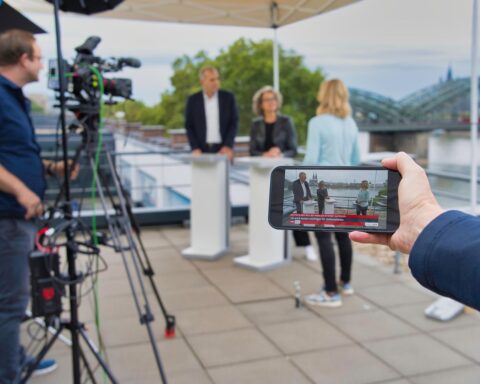The move aims to lower the entry barrier for many companies and drive diversification of network equipment vendors.
In particular, the reference designs will be designed to support emerging and established network infrastructure vendors develop high-performance, virtualized, interoperable, and modular 5G networks at scale. This aims to make cellular infrastructure more innovative and competitive.
Customers will benefit as Vodafone and other telecommunications companies mix and match hardware and software from a choice of suppliers to more easily extend 5G networks in specific geographical areas where they are most needed. Today, where two or more suppliers are used in a network, each one is deployed in a cluster, and the points at which they meet are often the most challenging in terms of performance.
The reference design will combine Vodafone’s engineering expertise at building high capacity, large-scale networks with Qualcomm Technologies’ leadership in developing high performance and low power Application-Specific Integrated Circuit (ASIC) solutions for device and infrastructure products. This powerful combination aims to ensure Open RAN is ready for use in 5G networks and capable of supporting bandwidth-hungry applications such as virtual and augmented reality devices, even in busy urban areas.
Santiago Tenorio, head of network architecture, Vodafone, said, “Global supply chains need a diverse and vibrant vendor ecosystem to keep them moving in the event of a product shortage or a single supplier having difficulties. Open RAN provides greater supplier diversity by allowing many more small vendors to compete on the world stage. Following the recent launch of our new Open RAN Test and Validation Lab, combining the creativity of Vodafone Engineering with that of our partners, we’re delighted to be partnering with Qualcomm Technologies to give smaller suppliers the best start.”
“Virtualized and Open RAN offer a significant opportunity to make 5G networks more flexible and cost efficient, transforming them into a platform for innovation,” said Dino Flore, vice president, technology, QUALCOMM Europe, Inc. “The collaboration to develop comprehensive solutions from Open RAN RU with MaMIMO capabilities to high performance DU platforms provides an important step forward in speeding up the transition to open, virtualized and interoperable radio access networks.”
Gerardo Giaretta, senior director, product management, Qualcomm Technologies, Inc. said, “Qualcomm Technologies aims to deliver cutting-edge technology for virtualized, flexible and interoperable 5G infrastructure across the globe. We look forward to expanding our efforts with Vodafone to support flexible and scalable 5G RAN deployments. Ecosystem collaborations like this play a critical role in allowing operators and industry verticals to more quickly and easily add 5G network coverage and capacity where and when it is needed most.”
The reference designs, powered by Qualcomm® Radio Unit Platform with Massive MIMO capabilities and Qualcomm® Distributed Unit Platform, is expected to be published this year with trials expected to start in the second half of 2022, following detailed software development.
Massive MIMO, a type of smart antenna, is a technique that gives many more customers a faster and more reliable mobile connection from a single mast. Vodafone is working on smart antenna network configurations of up to 64T64R (64 antennas to transmit and 64 to receive between the base station and a user’s device) to ensure there is ample capacity to connect multiple users at any time of the day.
About Qualcomm
Qualcomm is the world’s leading wireless technology innovator and the driving force behind the development, launch, and expansion of 5G. When we connected the phone to the internet, the mobile revolution was born. Today, our foundational technologies enable the mobile ecosystem and are found in every 3G, 4G and 5G smartphone. We bring the benefits of mobile to new industries, including automotive, the internet of things, and computing, and are leading the way to a world where everything and everyone can communicate and interact seamlessly.
Qualcomm Incorporated includes our licensing business, QTL, and the vast majority of our patent portfolio. Qualcomm Technologies, Inc., a subsidiary of Qualcomm Incorporated, operates, along with its subsidiaries, substantially all of our engineering, research and development functions, and substantially all of our products and services businesses, including our QCT semiconductor business.
About Vodafone Group
Vodafone is a leading telecommunications company in Europe and Africa. Our purpose is to “connect for a better future” and our expertise and scale gives us a unique opportunity to drive positive change for society. Our networks keep family, friends, businesses and governments connected and – as COVID-19 has clearly demonstrated – we play a vital role in keeping economies running and the functioning of critical sectors like education and healthcare.
Vodafone is the largest mobile and fixed network operator in Europe and a leading global IoT connectivity provider. Our M-Pesa technology platform in Africa enables over 45m people to benefit from access to mobile payments and financial services. We operate mobile and fixed networks in 21 countries and partner with mobile networks in 48 more. As of 30 September 2020, we had over 300m mobile customers, more than 27m fixed broadband customers, over 22m TV customers and we connected more than 112m IoT devices.
We support diversity and inclusion through our maternity and parental leave policies, empowering women through connectivity and improving access to education and digital skills for women, girls, and society at large. We are respectful of all individuals, irrespective of race, ethnicity, disability, age, sexual orientation, gender identity, belief, culture or religion.
Vodafone is also taking significant steps to reduce our impact on our planet by reducing our greenhouse gas emissions by 50% by 2025 and becoming net zero by 2040, purchasing 100% of our electricity from renewable sources by 2025, and reusing, reselling or recycling 100% of our redundant network equipment.






